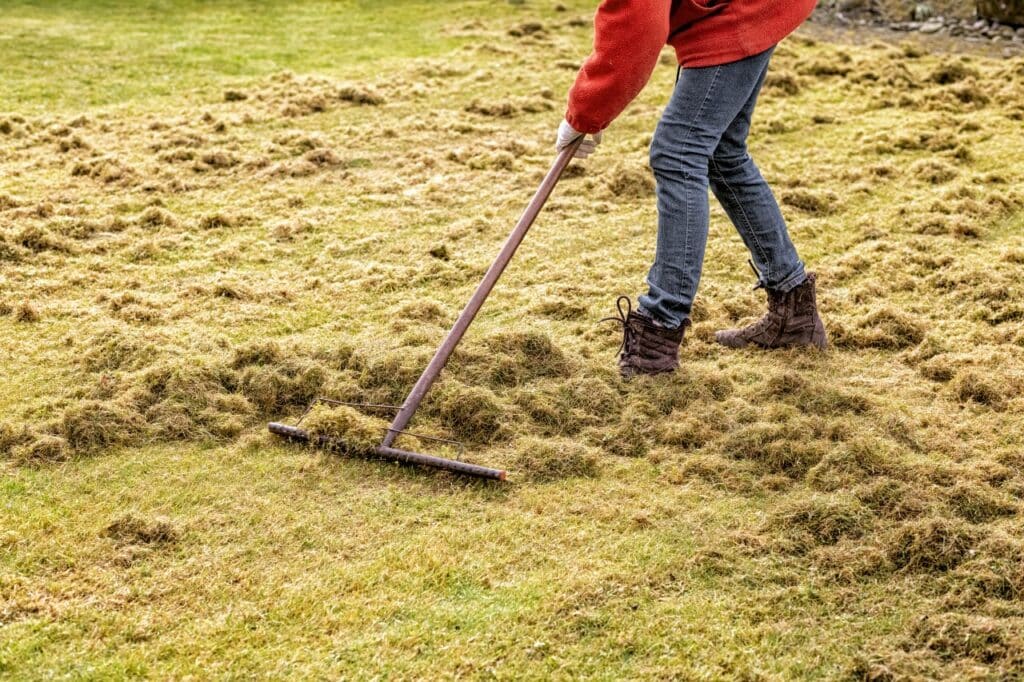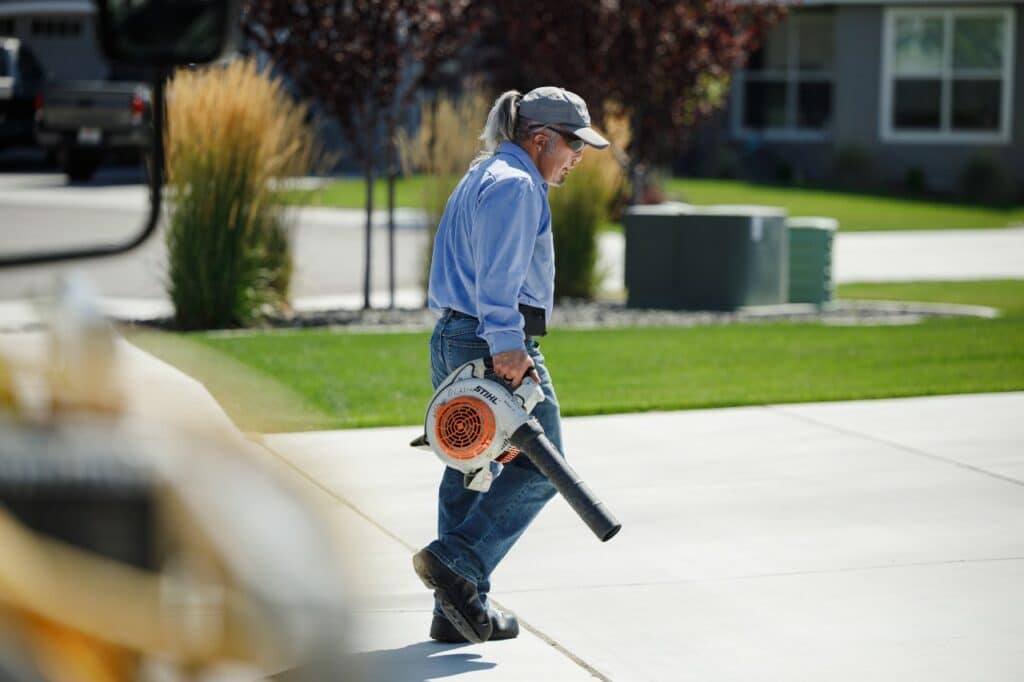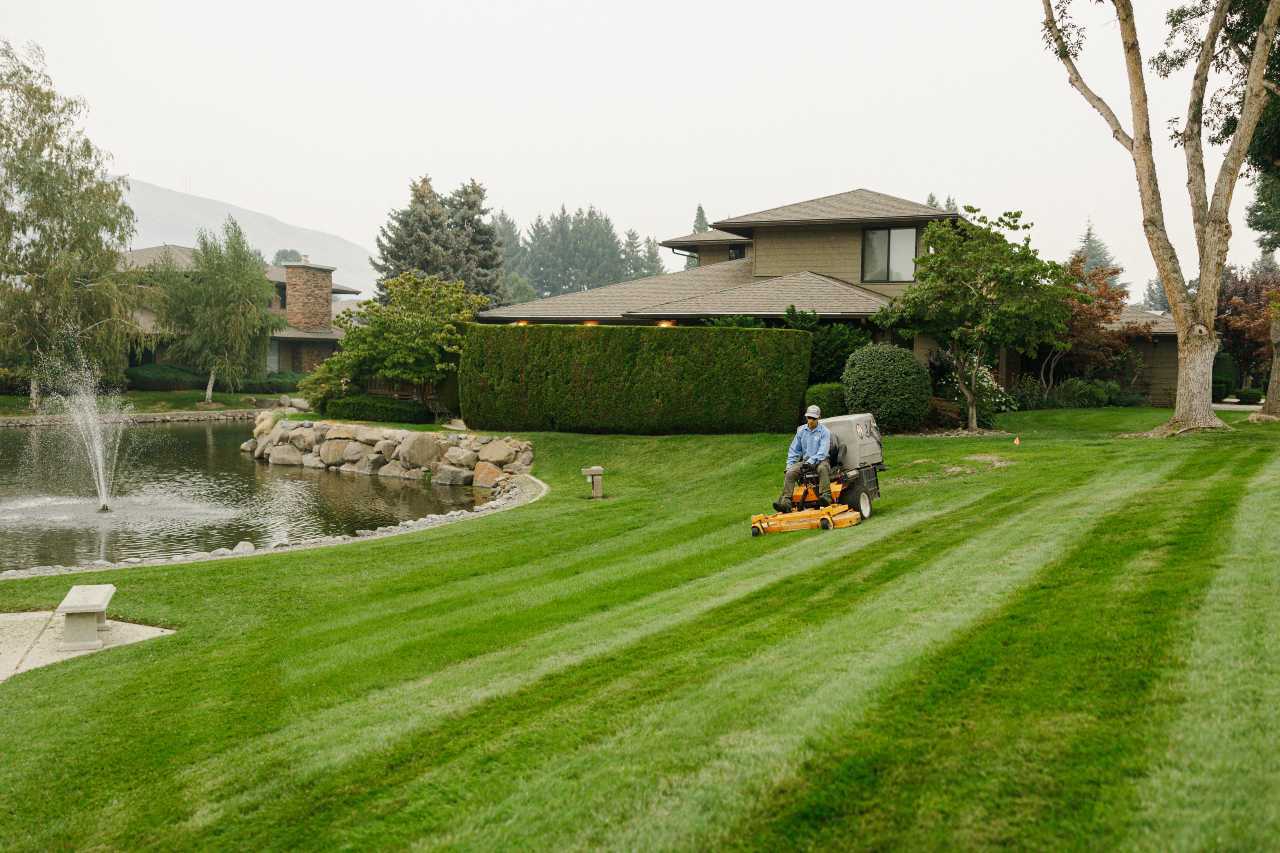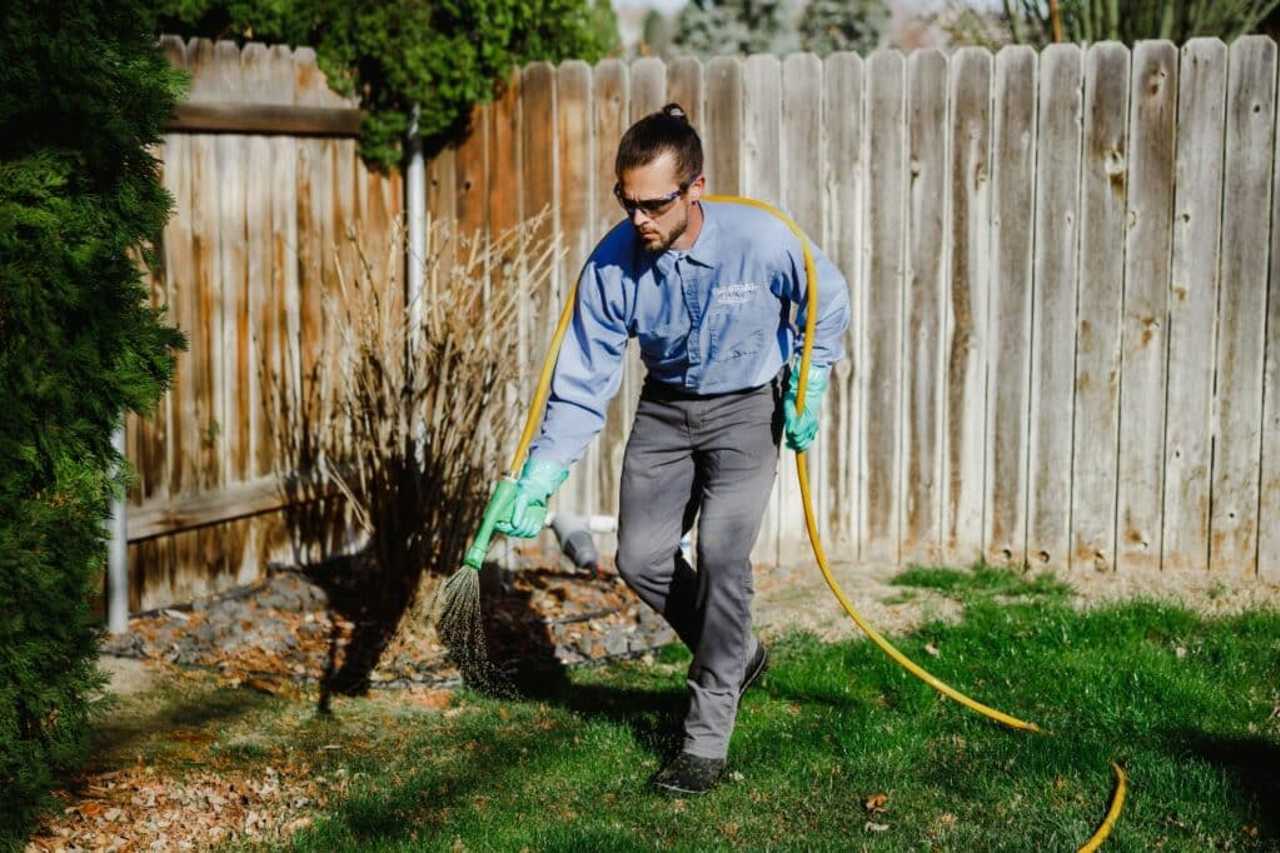
There’s a famous saying that goes: all things in moderation. That’s certainly true about the thatch in your lawn. Thatch comprises dead organic material like grass and leaves and provides many benefits for your lawn. Unfortunately, when the thatch layer is too thick, it can have the opposite effect and smother the grass. Learn the good and bad of thatch and why it’s crucial to de-thatch your lawn at least once a season.
What Is Thatch

Thatch is essentially the dead organic material left in your lawn. Grass blades from mowing, dead leaves, flower petals, virtually any dead plant material that’s been left on the lawn.
Why Is Thatch Good
Thatch is essentially nature’s mulching service. It helps soil retain moisture levels and replenishes nutrients in the ground. It sounds like a win-win situation, right? Well, that’s not always the case.
Why Is Thatch Bad
As you’re probably aware, ideal soil conditions are when it’s moist, loose enough for plant roots to move through, has a pH level around 6.5, has ample nutrients for plants to absorb, and water can pass through it rather than puddling. Unfortunately, these ideal conditions are altered when the thatch layer is too thick in your lawn. When thatch is too thick, it will:
- Smother the grass and turn the soil from loose and airy to hard and compacted. When soil is compacted, the grassroots can’t expand and grow, and air, water, and sunlight reach the root zone.
- Throw off the pH level, making the soil too acidic to be receptive to fertilizer.
- Encourage turf disease and insect infestations. Both of these things need dark, dank environments to thrive, and thatch provides that.
How To Tell If You Should De-Thatch
Give a patch of lawn a thorough raking. If you pull up a great deal of straw-like material, it’s a good sign you should de-thatch.

How To Remove Thatch
Using a power rake, your lawn care services technician will comb over your yard and remove the bulk of thatch material, allowing air, water, sunlight, and nutrients to reach the root zone of your grass once again. You can do this yourself, but thatching requires a specialized rake that is heavy and bulkier compared to standard rakes. And because it really digs into the grass, instead of skimming the surface, it requires more time and effort. Not everyone has the time or desire to spend so much effort on the lawn, and we don’t blame them. That’s why we’re pleased to offer members of the Yakima tri-city area de-thatching services.
De-thatching is a good idea to do in spring and fall since this is when cool-season grasses hit their stride. Thatching in spring and fall helps them recover before the peak growing season in summer or before going dormant during the winter.
De-Thatching Or Core Aeration
Colonial Lawn & Garden landscapers can perform both of these services. Both will help the look and appearance of your lawn, but they do so in different ways. Dethatching is for soil not as compacted, while aeration is best for heavily compacted yards. De-thatching is advisable to do at least once a year. If you’re diligent about it, you may not need aeration since removing the thatch helps slow the compaction rate. DIY de-thatching is also far less labor-intensive than aeration. Aeration requires using an aerator, which can be cumbersome and strenuous to push around the lawn. De-thatching is also better for smaller yards. Raking a larger yard is quite a chore, so we’d recommend aeration for larger yards.
After de-thatching, it’s a good idea to get your soil sampled. This report will tell you what nutrients your soil is lacking and what it has in abundance – giving you a better idea of which fertilizer to use going forward. If it’s been a long time since you de-thatched your lawn, it may take a bit for the mineral levels to recover. It may also be advisable to have lime or gypsum dispersed to help correct a severe pH balance. Lime will fix overly acidic lawns, and gypsum will improve yards leaning to the alkaline side of the spectrum.

Find Lawn Care Near Yakima
While de-thatching is not as labor-intensive as aeration, it still involves a great deal of work. Save yourself the time and effort – let Colonial Lawn & Garden put our expertise to work for you! Our de-thatching lawn treatment service will allow oxygen, water, fertilizer, and sunlight to reach the root zone of your grass once again. If you’re interested in this beneficial treatment, give us a call at (509) 966-1655 for service in Yakima or (509) 371-1655 for service near Richland. You can also reach us through our online contact form here.
And if you’re interested in learning more about our maintaining your Dream Backyard, be sure to check out our monthly blog posts here.
To learn about the latest deals, see photos of our work, or get inspiration for backyard projects, be sure to like us on Facebook and follow us on Twitter.





